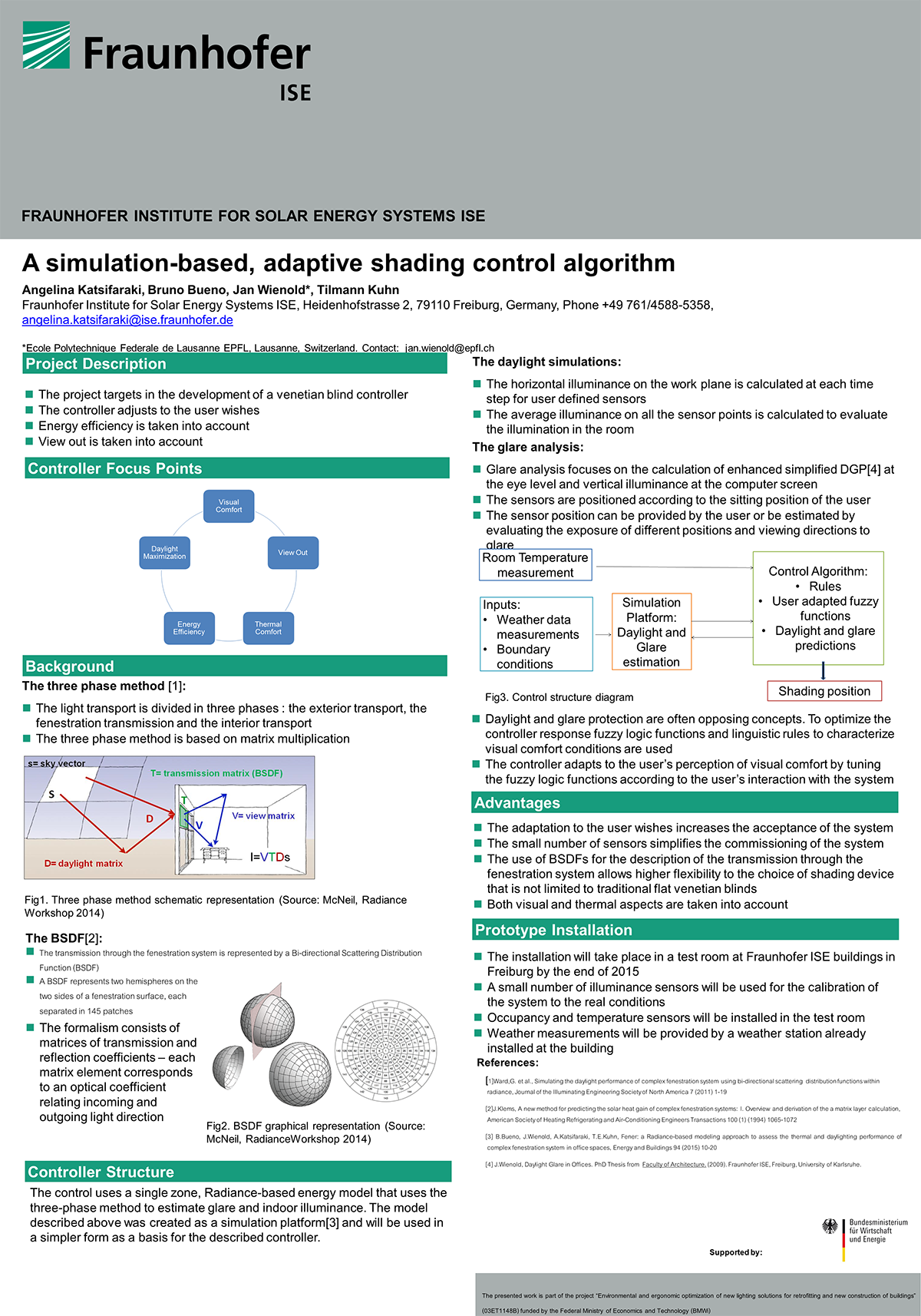A simulation-based, adaptive, shading control algorithm
by Angelina Katsifaraki, Fraunhofer-Institut für Solare Energiesysteme ISE, Germany
The need for automized shading control in commercial buildings is becoming increasingly important not only for the visual comfort of the employees, but also for improving the energy performance of the building. The most commonly available control strategies apply on traditional, flat or curved Venetian blinds and are rather simple since they function on illuminance set-points or schedules. More sophisticated systems use cut-off control in order to block the direct component of solar radiation in the room. Control strategies taking vertical illuminance or glare into account, though popular as an idea, are not commercialized. The reason lies mainly in the difficulties of the measurement procedures and the need of a large number of sensors that complicates the commissioning process of the controller. Finally, commercial control algorithms, despite their benefits, do not take into account the occupant’s subjective sense of visual comfort or the occupant’s need for visual contact with the outside. This often results to the poor acceptance of the controller from the users and leads them to overwrite the algorithm.
This PhD research focuses on the development of a simulation-based, adaptive shading controller. The controller uses a Radiance-based building model to run daylight and glare simulations using the three phase method in order to calculate the horizontal illuminance on the working surface and the vertical illuminance at the eye and computer screen levels. Based on these calculations, it selects the optimal shading configuration according to a rule based control algorithm. Additionally, it adapts to the user wishes by using fuzzy logic to characterize the user’s perception of visual comfort based on glare and illumination conditions in the room while it favors view out when possible. Finally, it contributes to the thermal comfort of the room by controlling the acceptance and rejection of solar gains depending on the season and the room temperature.
The described controller has many benefits over conventional systems since it takes into account glare and daylighting in an office space without requiring a complicated installation of illuminance sensors except from a rather simple one for calibration purposes. By using the three phase method, the simulation time is short enough and the computational requirements are low so it can be used in a prototype installation Moreover, the system can be quite flexible as to the choice of the shading device as opposed to traditional shading control systems. Finally, the control algorithm puts weight on the user wishes by adjusting to the user preferences and also favoring view out.




